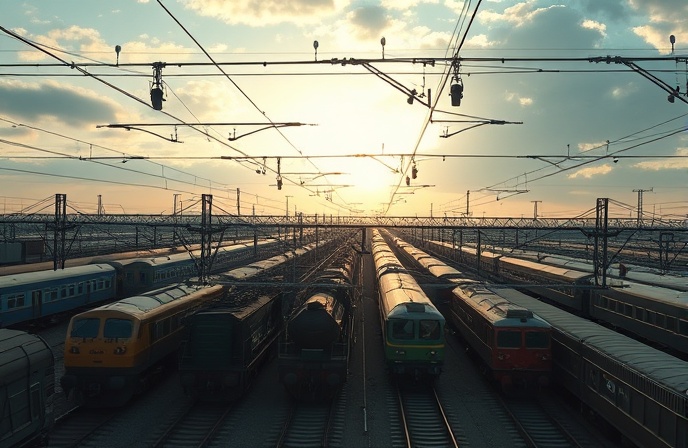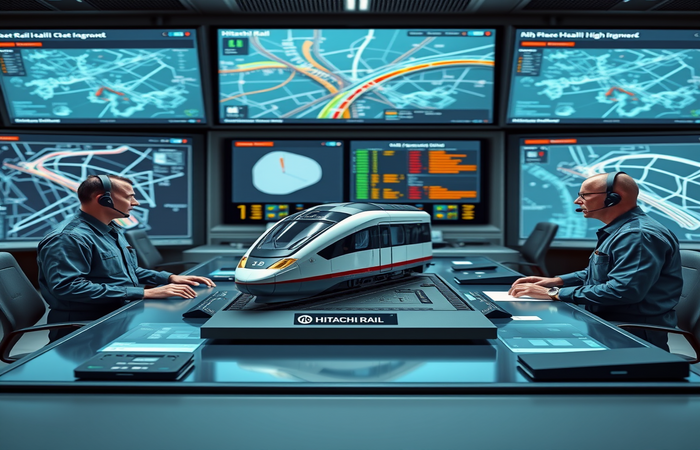Beacon Rail Leasing: Revolutionizing Global Rail Infrastructure
Revolutionize your railway infrastructure with modern leasing models like Beacon Rail Leasing. Discover how these innovative financing solutions speed up vital projects and drive sustainability.

The Future of Railway Infrastructure: A Deep Dive into Modernization and Leasing
The global railway industry is undergoing a period of significant transformation, driven by technological advancements, increasing passenger demand, and the pressing need for sustainable transportation solutions. This article delves into the key aspects of this evolution, exploring the crucial role of modernization and innovative leasing models, particularly highlighting the impact of Beacon Rail Leasing. From optimizing existing infrastructure to constructing entirely new networks, the railway sector is pushing the boundaries of efficiency and sustainability. The future of passenger and freight movement hinges on a combination of strategic planning, technological innovation, and a willingness to embrace new approaches to financing and asset management. This analysis examines the key considerations behind these changes, exploring the opportunities and challenges associated with modernizing rail infrastructure.
Modernizing Existing Railway Networks
Modernizing existing rail networks is not simply about upgrading track and signals. It involves a comprehensive approach encompassing several crucial areas. This includes: enhancing safety systems through the implementation of advanced signaling technologies (e.g., CBTC – Communication-Based Train Control) which significantly improve train separation and communication, increasing passenger comfort by upgrading onboard amenities, and enhancing stations to improve accessibility and passenger experience. This transformation often necessitates integrating new technologies like real-time passenger information displays, advanced fare collection systems, and intelligent traffic management systems.
Innovations in Railway Construction
The construction of new railway lines is equally significant for future growth. This involves not only optimizing routes but also incorporating sustainable materials and construction methods. This includes exploring alternative rail designs such as high-speed rail lines to accommodate greater passenger volumes and faster travel times. The use of prefabricated components, modular design, and construction techniques for faster and more cost-effective installations are crucial components for reducing project completion time and increasing efficiency. A key factor in railway construction is the need to minimize environmental impact. This involves careful planning of routes, using environmentally friendly materials, and employing construction techniques that minimize disruption to local communities. Implementing sustainable construction practices is vital to align with environmental goals.
The Role of Leasing in Railway Infrastructure
Beacon Rail Leasing, and similar models, represent a significant shift in how railway infrastructure is financed and managed. Traditional methods often involve significant upfront capital investments. Leasing allows for flexible financing options, reducing initial capital expenditure and allowing for greater budgetary flexibility. This can be particularly beneficial for smaller or developing railway systems, facilitating faster infrastructure rollouts. Moreover, lease agreements often include provisions for maintenance and upgrades, streamlining operational responsibilities. This also allows a greater focus on operational efficiency. The innovative financing methods such as Beacon Rail Leasing significantly influence the availability of funding. The efficient use of such financing can be critical to expanding the rail network in developing economies. This process can bring much-needed modernization to existing networks and enable infrastructure improvements in areas that may not otherwise have been prioritized.
Conclusion: A Sustainable and Innovative Railway Future
The future of railway infrastructure is characterized by a convergence of modernization and innovation. Upgrading existing networks by implementing cutting-edge technologies like CBTC, and creating more sustainable construction methods for new projects are essential for enhancing safety, efficiency, and environmental consciousness. A critical component in facilitating rapid infrastructure expansion is the emerging role of innovative leasing models, such as Beacon Rail Leasing, which provide crucial flexibility in financing and asset management. This shift in infrastructure development presents an opportunity to enhance efficiency and safety, reduce costs, and promote sustainable practices in the entire rail system. These strategies enable faster implementation of vital projects and allow greater access to essential transportation systems for the public good. Ultimately, the adoption of these methods will be crucial for ensuring the railway industry remains a vital component of the global transportation network. Integrating sustainable practices throughout the lifecycle of railway projects is crucial to future success.
By embracing modernization, innovative construction techniques, and creative financing solutions, the railway industry can meet the increasing demands for sustainable, efficient, and safe transportation systems. The potential for improved passenger comfort, enhanced safety features, and increased accessibility is significant. This convergence of these factors promises a more vibrant and connected future for global communities. This transformation is not just about improving existing systems, but about creating a future where rail transportation plays an increasingly prominent role in achieving sustainability goals and fostering economic growth.
You might be interested in:


